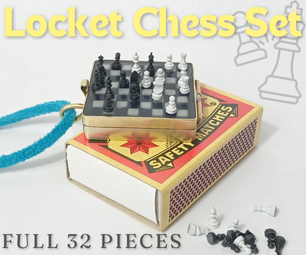Introduction: Silver & Amber Ring
Over 15 years ago I made a silver ring with a bezel-set amber stone in a jewelry making class, and I've been wearing it ever since. In this project, I'll walk you through my process for recreating this ring (a newer, nicer version of the original).
For this project, you will need:
- Sterling silver crazy-8 wire (8 gauge)
- Sterling silver sheet in 14-18 gauge
- Fine silver bezel wire
- Amber stone - oval cabochon
- Silver solder in hard, medium, and easy
- Butane torch and fuel
- Fire extinguisher
- Fireproof soldering surface
- Everything else from the Torch Soldering lesson in my Jewelry Class
To keep up with what I'm working on, follow me on YouTube, Instagram, Twitter, Pinterest, and subscribe to my newsletter.
Step 1: Bezel Base Cutout
Since the amber stone allows light to pass through, the base of the bezel should, too. I used my rotary tool to drill a hole in a piece of scrap silver sheet, traced my stone over it, and then used my jewelry saw frame to cut out a shape about 1/8" from the line. If you're new to piercing precious sheet metal, check out my Jewelry Class' lesson on the topic to get up to speed.
Step 2: Form and Solder Bezel Wire
I trimmed down my too-wide bezel wire and formed it to the shape of the amber stone. I used hard solder to connect it into a ring, and then refined the shape to match the stone with my nylon-nosed pliers.
Step 3: Connect Bezel Components
I cleaned the sheet and the bezel and soldered them with medium solder and a soldering tripod, since the thick sheet needed more heat than the delicate bezel wire and the tripod lets you solder from underneath. Then I pickled the whole piece to remove oxides.
After rinsing and drying the piece, I cut out the bezel shape from the silver sheet and filed/sanded the edges smooth. This tiny piece is hard to handle so I used a ring clamp at times to gently hold it (but not clamping down so hard as to bend the soft bezel wire).
Step 4: Bend and Connect Two Wires
Following my paper template, I bent two pieces of wire into shape with pliers, being careful to mar the surfaces as little as possible. At times the shapes would become less than flat so I used a rawhide mallet and bench block to flatten them back out.
When the two pieces of wire were in shape, I bound them together with steel binding wire, applied flux and bits of hard solder, then evenly heated the whole piece to solder the wires together. I only quenched silver after letting it cool for a minute, then removed the binding wire before throwing it in the pickle pot.
Step 5: Refine, Shape, & Solder Ring
While the wire shape is still flat, it was convenient to refine the soldered area with a triangular file and do a test fit of the bezel.
Sizing can be tricky and the ring turned out too big in the end. But my solder joint turned out so well (the main flaw of my original version was a poorly executed solder joint in this location) that I didn't want to risk mucking it up with a do-over. The idea is to cut it a little too long and then remove further material as you square up the wire ends, and redo the whole process if it is too big (but you can't add more material if you make it too small).
The thick wire was difficult for me to shape with just pliers, so I used a rawhide mallet and bench block to help out. I could have annealed (softened) the shape with the torch, too.
Step 6: Final Assembly & Polishing
I shaped the ring on a mandrel with a rawhide mallet and did a long filing/sanding/polishing session with the main ring and the bezel while stills separate, since the whole thing becomes a bit more delicate after soldering. The bezel will soften up even more and then the whole ring cannot be braced on the bezel or it will crush/bend.
I braced the assembled ring between two firebricks (and atop a fireproof surface) and applied flux and easy solder to the two locations where the bezel meets the ring.
After pickling, I did some cleanup work on the rogue solder (probably applied too much solder and flux, in retrospect) and polished the whole piece to a mirror finish using some Luxi compounds and my rotary tool with felt buffs.
Step 7: Stone Setting
I cleaned the ring with a toothbrush and soap (and a toothpick inside the bezel) and thoroughly dried it before getting ready to set the stone. I placed the stone in the bezel and clamped its edges with my nylon-jaw pliers. I don't have a real burnishing tool so I used my round-nose pliers to firmly slide across the edge of the bezel to get some burnished smoothness.
I look forward to your feedback in the comments, and hope you'll check out more techniques in my free Jewelry Class here on Instructables!











